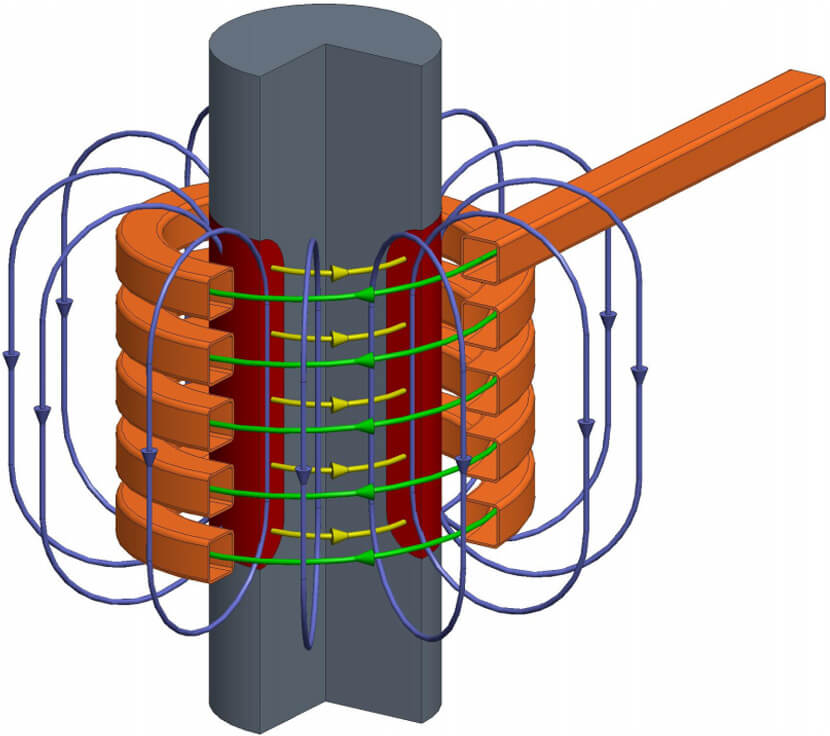A periodic alternating current flowing in an electrical conductor creates an electromagnetic field. Placing another conductor within this space the electromagnetic field induces an alternating current. The delivery of energy is similar to that observed in transformers. In the case of induction heating the first conductor is the heating coil, which is the inductor, and the second conductor is the piece being worked on.
 When the current in the inductor, placed near the work piece is the right frequency and amperage, the alternating current flowing through the piece heats it up. The extent of heating depends on the specific conductivity of the non-ferromagnetic pieces through which the current flows and on the diameter of the piece. In case of ferromagnetic materials the hysteresis heat resulting from periodic magnetism is added to this.
When the current in the inductor, placed near the work piece is the right frequency and amperage, the alternating current flowing through the piece heats it up. The extent of heating depends on the specific conductivity of the non-ferromagnetic pieces through which the current flows and on the diameter of the piece. In case of ferromagnetic materials the hysteresis heat resulting from periodic magnetism is added to this.
Downloads:
Induction heating PDF
Induction heating 3D PDF
- The induced currents flow through the surface layer of the work piece. The higher the frequency of the impulsive current the thinner the layer in which the induced current and heat (in Joules) is generated. This phenomenon is called the Skin effect. It therefore follows that by carefully choosing the frequency and power applied, we can accurately define how deep the surface of the work piece can be heated.
- The current only flows in the work piece within close proximity of the inductor, in a shape defined by its geometry. By the accurate development of the inductor and by carefully choosing the proper capacity, we can achieve a controlled, concentrated and local heating of very specific parts of the work piece.
- In case of induction heating heat is generated right within the work piece, so there is no need for mechanical contact or a heat transmitting medium between the inductor and the work piece. Heating can be applied within a protected atmosphere, divided spaces and under many other special conditions.
- The magnitude of surface power that can be transmitted with induction heating is much greater compared to traditional heating methods (fire, furnace, contact heating, etc.), providing unique heat treating methods we cannot otherwise accomplish.
- Induction heating is environmental friendly, power efficient, does not need a lot of space, easily regulated, reliable under industrial conditions and is a generally trustworthy technology.
 When the current in the inductor, placed near the work piece is the right frequency and amperage, the alternating current flowing through the piece heats it up. The extent of heating depends on the specific conductivity of the non-ferromagnetic pieces through which the current flows and on the diameter of the piece. In case of ferromagnetic materials the hysteresis heat resulting from periodic magnetism is added to this.
When the current in the inductor, placed near the work piece is the right frequency and amperage, the alternating current flowing through the piece heats it up. The extent of heating depends on the specific conductivity of the non-ferromagnetic pieces through which the current flows and on the diameter of the piece. In case of ferromagnetic materials the hysteresis heat resulting from periodic magnetism is added to this.